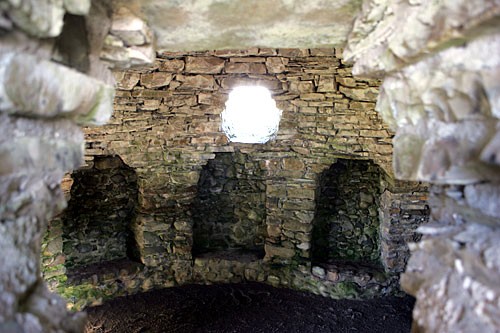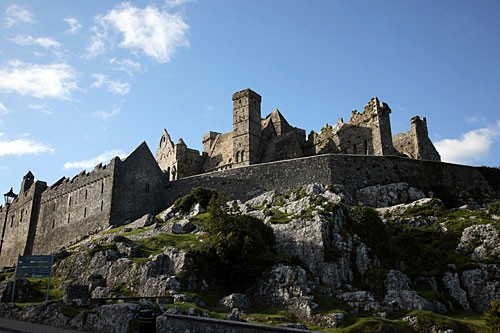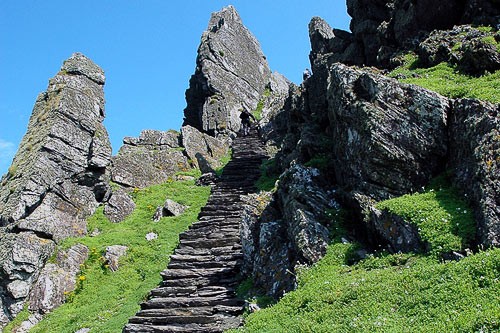Best Celtic Ruins and Ancient Sites in Ireland
By
Our Favorite Irish & Celtic Historic Sites
By Christi Daugherty & Jack Jewers
The new EasyGuide to Ireland hits all the highlights of Ireland and tells you how to see them in their best light.
Ireland's earliest settlers were middle Stone Age Mesolithic tribes, who arrived around 8000 BC via wooden boats and temporary land bridges from Scotland; then Neolithic farmers from Britain; then the Celts. Christianity first arrived in the 5th century AD, heralding a golden age of monastic learning and culture that lasted hundreds of years, only to be torn down by the Vikings. Here are five sites where you can get close to the past.
Photo Caption: Interior of the ruins at the Rock of Cashel. Photo by kris g/Frommers.com Community.
The new EasyGuide to Ireland hits all the highlights of Ireland and tells you how to see them in their best light.
Ireland's earliest settlers were middle Stone Age Mesolithic tribes, who arrived around 8000 BC via wooden boats and temporary land bridges from Scotland; then Neolithic farmers from Britain; then the Celts. Christianity first arrived in the 5th century AD, heralding a golden age of monastic learning and culture that lasted hundreds of years, only to be torn down by the Vikings. Here are five sites where you can get close to the past.
Photo Caption: Interior of the ruins at the Rock of Cashel. Photo by kris g/Frommers.com Community.
Newgrange, County Meath
One of the archaeological wonders of western Europe, this UNESCO World Heritage Site was built as a ceremonial mound more than 5,000 years ago -- long before the Egyptian Pyramids or Stonehenge. It sits atop a hill near the Boyne, massive and mysterious, with its 200,000 tons of rock, a 6-ton capstone, and other rocks weighing up to 16 tons each. Each stone fits perfectly in the overall pattern, and the result is a mortarless, watertight feat of engineering.
Photo Caption: In a feat of ancient engineering, the mound at Newgrange is watertight.
Photo Caption: In a feat of ancient engineering, the mound at Newgrange is watertight.
Glendalough, County Wicklow
This misty glen is a magical place, with its abandoned 5th-century monastery built around two dark lakes, surrounded by forests. As you wander the rocky paths beside the ancient chapels, in perpetual soft focus, the landscape exudes spirituality -- absent the crowds in high season. For the optimal atmosphere, arrive very early in the morning, before the tourists descend.
Photo Caption: Graves at Saint Kevin's Monastery in Glendalough.
Photo Caption: Graves at Saint Kevin's Monastery in Glendalough.
The Rock of Cashel, County Tipperary
When you're near the town of Cashel, the first thing you'll see is the extraordinary, dramatic outline of this craggy old abbey at the top of the hill at the town center. It dominates views for miles around. An outcrop of limestone reaching 60m (197 ft.) into the sky, "the Rock" tells 16 centuries' worth of tales. It was the castled seat of the kings of Munster at least as far back as 360 AD, and it remained a royal fortress until 1101, when King Murtagh O'Brien granted it to the church. Among Cashel's many great moments was the legendary baptism of King Aengus by St. Patrick in 448. Remaining on the Rock are the ruins of a two-towered chapel, a cruciform cathedral, a 28m (92-ft.) round tower, and a cluster of other medieval monuments. Inside the cathedral, ancient carvings survive in excellent condition. The views from the Rock are spectacular. Forty-five-minute guided tours are available on request.
Photo Caption: Welcome to the Rock: This abbey saw the baptism of legendary King Aengus.
Photo Caption: Welcome to the Rock: This abbey saw the baptism of legendary King Aengus.
Skellig Michael, County Kerry
In the 6th century, Christian monks built a monastery on this rocky island 29km (18 miles) off the rocky southwest coast. There, in exquisite isolation, they eked out their livelihood and transcribed Western literature after the sack of Rome, salvaging the Great Books from the Dark Ages. Visitors reach the ruins of their church, oratory, and beehive huts by way of stone staircases that ramble up the seaside cliffs. It's now a UNESCO World Heritage Site.
Photo Caption: Stone staircase leading to Skellig Michael. Photo by lgmadden/Frommers.com Community.
Photo Caption: Stone staircase leading to Skellig Michael. Photo by lgmadden/Frommers.com Community.
Carrowmore Megalithic Cemetery, County Sligo
This is one of the great sacred landscapes of the ancient world. At its center are a massive passage grave and a stone circle, surrounded by as many as 200 additional stone circles and passage graves arranged in an intricate and mysterious design. The site spreads out so far that many of the formations are in farms adjacent to the preserved cemetery. Look out for your first dolmen in a paddock next to the road about a mile before you reach the site.
Photo Caption: The dolmens at Carrowmore were megalithic graves.
Photo Caption: The dolmens at Carrowmore were megalithic graves.











